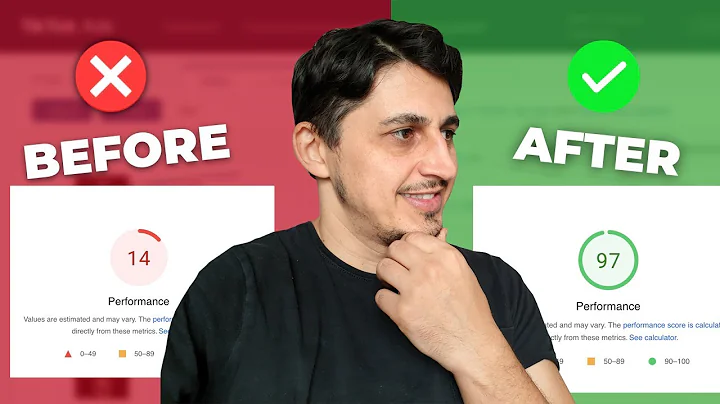Boost Your Shopify Collection Page's SEO with Optimization Tips
Table of Contents
- Introduction
- Understanding SEO Optimization for Collection Pages
- Choosing the Right Target Keyword
- Optimizing the Collection Title
- Importance of Description and First Paragraph
- Incorporating the Target Keyword in Content
- Utilizing Image Alt Text for SEO
- Optimizing SEO Title and Meta Description
- Enhancing URL for Better Rankings
- Other Considerations for Collection Page SEO
- The Power of Optimized Collection Pages
- Conclusion
SEO Optimizing Collection Pages on Shopify
In today's digital landscape, having a strong online presence is crucial for the success of any business. One of the most effective ways to drive traffic to your website and increase your visibility on search engines is through search engine optimization (SEO). While most businesses focus on optimizing their product pages, many overlook the importance of optimizing their collection pages on platforms like Shopify.
In this article, we will explore the process of SEO optimizing collection pages on Shopify, step by step. From choosing the right target keyword to incorporating it strategically in different elements of your page, we will cover all the essential aspects of optimizing collection pages for better search engine rankings. So, let's dive in and discover how to make your collection pages more SEO-friendly.
Understanding SEO Optimization for Collection Pages
Before we begin optimizing collection pages on Shopify, it's crucial to understand the concept of SEO optimization. Search engine optimization is the practice of improving your website's visibility and ranking on search engine results pages (SERPs). By optimizing various elements of your website, such as keywords, titles, descriptions, and images, you can increase your chances of appearing higher in search results.
When it comes to collection pages, SEO optimization plays a vital role in attracting organic traffic and potential customers to your online store. By implementing proper optimization techniques, you can improve your collection pages' visibility on search engines like Google, increasing the likelihood of users discovering and purchasing products from your store.
Choosing the Right Target Keyword
The first step in optimizing your collection page for SEO is selecting the right target keyword. A target keyword is the primary keyword you want your page to rank for in search engine results. It should accurately represent the content and products within your collection.
To choose the right target keyword, consider your target audience, the products you offer, and the search intent of potential customers. Conduct keyword research to identify relevant keywords with a balance of search volume and competition. Using keyword research tools like Google Keyword Planner or SEMrush can help you find suitable target keywords.
It's essential to select a target keyword that is specific and relevant to your collection. Avoid broad keywords that are too generic, as they may have high competition. Instead, choose more targeted and long-tail keywords that have relatively less competition but are still relevant to your products and audience.
Optimizing the Collection Title
Once you have identified your target keyword, the next step is to optimize the collection title. The collection title is a crucial element of your page, as it appears as the main heading (H1 tag) on your collection page.
To optimize the collection title, ensure that it includes your target keyword. By including the target keyword in the collection title, you provide a strong signal to search engines about the main topic and focus of your page. This helps search engine crawlers understand the relevance of your page to specific search queries.
Ideally, place the target keyword at the beginning of the collection title for optimal impact. However, make sure the title still reads naturally and is engaging to users. Avoid keyword stuffing or making the title sound spammy, as it can negatively affect both user experience and search engine rankings.
Importance of Description and First Paragraph
Apart from the collection title, the description and the first paragraph of your collection page are also crucial for SEO optimization. The description often appears below the collection title and provides a brief overview of the collection's contents.
Ensure that your target keyword is repeated within the description. Aim to include the target keyword within the first paragraph to catch the attention of search engine crawlers when they scan the page. Including the keyword multiple times within the first 250 words provides context clues to search engines about the page's main topic.
However, it is important to strike a balance between optimization and user experience. Avoid overusing the target keyword, as it can make the content sound repetitive and spammy. Remember, the ultimate goal is to create valuable and informative content that resonates with your audience while also signaling its relevance to search engines.
Incorporating the Target Keyword in Content
When optimizing the content on your collection page, ensure that you include the target keyword naturally throughout the text. While there is no fixed rule on keyword density, aim to incorporate the target keyword multiple times based on the length of the content.
Apart from the first paragraph, look for opportunities to naturally include the target keyword in the main body of your collection page. Write descriptive and engaging product descriptions that highlight the features, benefits, and uniqueness of each product within the collection.
Remember to prioritize user experience over keyword optimization. Focus on creating valuable and reader-friendly content that showcases your products effectively. By providing helpful and informative content, you can engage users and increase the chances of generating conversions.
Utilizing Image Alt Text for SEO
In addition to textual content, images also play a significant role in optimizing your collection page for SEO. Image alt text is an often overlooked aspect of SEO optimization that can greatly enhance your page's visibility on search engines.
When adding images to your collection page, make it a practice to edit the image alt text. The alt text should be descriptive of what is depicted in the image but also include your target keyword. Including the target keyword within the alt text provides search engines with more context about the image and its relevance to the collection page.
However, it is crucial to be genuine and descriptive in the alt text. Avoid keyword stuffing or using unrelated keywords, as it can harm your SEO efforts. Follow best practices for alt text and ensure that it accurately represents the image while incorporating the target keyword naturally.
Optimizing SEO Title and Meta Description
The SEO title and meta description are meta tags that appear in search engine results and provide a concise summary of your collection page. Optimizing these meta tags is essential for attracting clicks and increasing your page's visibility on search engine results pages (SERPs).
Make sure to include your target keyword in the SEO title. Try to place the keyword towards the beginning of the title to make it more prominent to both search engines and users. A well-optimized SEO title helps search engines recognize the relevance of your page to specific search queries, improving the chances of higher rankings.
Similarly, craft a compelling meta description that includes your target keyword. While meta descriptions do not directly impact search engine rankings, they influence click-through rates and user engagement. By incorporating the target keyword in the meta description, you can attract more clicks and increase the likelihood of users visiting your collection page.
Enhancing URL for Better Rankings
The URL of your collection page also plays a role in SEO optimization. The URL provides an additional signal to search engines about the content and relevance of your page. By optimizing the URL, you can further enhance your page's chances of better rankings.
Ensure your target keyword is included in the URL handle of your collection page. The URL handle should be descriptive, concise, and contain the target keyword in a readable format. A well-optimized URL provides a clear indication to search engines about the content of your page.
It is important to exercise caution when altering URL handles or creating redirects. If you are not familiar with the process of modifying URLs, seek assistance from a web developer or SEO professional to avoid any potential issues or disruptions to your website.
Other Considerations for Collection Page SEO
While the aforementioned elements are essential for optimizing collection pages on Shopify, there are a few additional considerations to keep in mind:
- Page Speed: Ensure your collection page loads quickly, as page loading speed is a crucial ranking factor for search engines. Optimize your images, minimize unnecessary code, and leverage caching techniques to improve page speed.
- Mobile-Friendly Design: With the majority of internet traffic coming from mobile devices, it is crucial to ensure your collection page is mobile-friendly. Use a responsive design, optimize images for mobile viewing, and ensure smooth navigation on all devices.
- Internal Linking: Incorporate internal links within your collection page and from other relevant pages on your website. Internal linking improves navigation, enhances user experience, and helps search engines understand the structure and hierarchy of your website.
- Social Sharing: Encourage social sharing of your collection page by integrating social media sharing buttons. Increased social engagement can indirectly boost your SEO efforts by driving more traffic and generating backlinks to your page.
The Power of Optimized Collection Pages
Optimizing collection pages on Shopify may be an often overlooked aspect of SEO, but when done right, it can have a significant impact on your online store's visibility and search engine rankings. By strategically incorporating your target keyword in key elements such as the collection title, description, content, image alt text, SEO title, and meta description, you can improve your page's visibility and attract more organic traffic.
Remember, SEO optimization is an ongoing process that requires monitoring, analysis, and continuous improvement. Stay up to date with the latest SEO trends, algorithm changes, and best practices to maintain and improve your collection page's performance.
So, don't underestimate the power of SEO optimizing your collection pages. Take the necessary steps to enhance your Shopify store's visibility, attract more potential customers, and ultimately drive more sales.
Conclusion
Optimizing collection pages for SEO on Shopify is an essential step in improving your online store's visibility and attracting organic traffic. By choosing the right target keyword and strategically incorporating it into various elements such as the collection title, description, content, image alt text, SEO title, and meta description, you can improve your page's chances of higher rankings on search engine results pages.
Remember, SEO is not a one-time task but an ongoing process. Continuously monitor the performance of your collection pages, make necessary adjustments, and stay updated with the latest SEO practices and trends. With a well-optimized collection page, you can increase your online store's visibility, attract potential customers, and boost your overall success in the competitive eCommerce landscape.






















